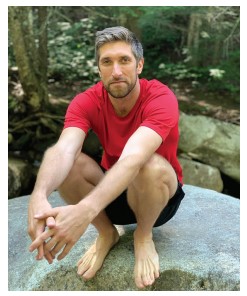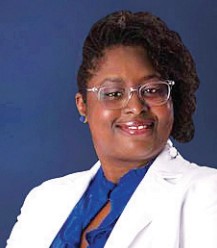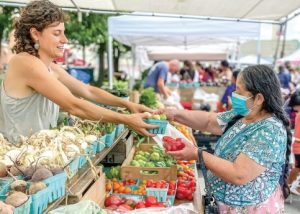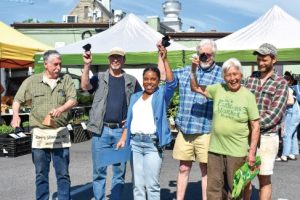by Jessica Jones
Something really interesting happens when we read fiction. Our brains take the words and turn them into imagery, characters, and feelings for which we suspend disbelief to appreciate. Even though fictional stories aren’t literally true, they give us a lot of intangible things, like entertainment, stress reduction, and empathy.
 I don’t think that anyone who reads fiction would be surprised to learn that doing so encourages empathy, but science actually backs us up on this point. There has been a lot of research on this topic in the last decade especially, and it has been interesting to watch coverage evolve as the conversation continues. This is a very abbreviated summary of the conversation that, I think, is useful from an information literacy perspective.
I don’t think that anyone who reads fiction would be surprised to learn that doing so encourages empathy, but science actually backs us up on this point. There has been a lot of research on this topic in the last decade especially, and it has been interesting to watch coverage evolve as the conversation continues. This is a very abbreviated summary of the conversation that, I think, is useful from an information literacy perspective.
For more about information literacy, check out the January and February 2022 issues of the City’s newsletter! In the meantime, a quick version:
Information literacy is a skill that is developed and utilized to evaluate the reliability of information. It involves using critical thinking to consider the context of information to make judgments about where and how that information may be applied. The ability to discern reliable information from “fake news,” and the veritable avalanche of uninformed and under-informed opinions we encounter, is crucial to safely navigating our world.
How do empathy and fiction fit into this definition? I believe they live in the “context” component.
Research shows a general consensus that there is a correlation between consumption of fiction and empathetic traits. John Best cites this consensus and notes in his 2020 North American Journal of Psychology article “Reading Literary Fiction: More Empathy, but at What Possible Cost?” that, “readers of fiction outperform nonreaders of fiction on empathy tasks.” This happens because when we read fiction, we, “use imagination and other cognitive processes to visualize and simulate social processes occurring among the fictional characters,” i.e., we take in the words and translate it through our lived experiences and observations into a mental picture with which we interact.
To my mind, validation and empathy are two sides of the same coin with fiction. When we see ourselves, it can be validating. When we see others in fiction — other cultures, ethnicities, religions, politics, disabilities, sexual orientations, genders, socioeconomic classes — in this setting where we are already mentally worldbuilding and imagining, we can expand our worldview, and we can empathize.
Granted, we bring our own biases wherever we go, and fiction is no exception. People can reach vastly different conclusions with the same text. I’m pretty sure that’s a big component of literary criticism as a field. But fiction can be a tool to get us outside of ourselves, if
we’re willing to go there. And, therein lies both the opportunity and the potential hazard.
In her 2009 TEDtalk, Chimamanda Adichie warns of the dangers of a single story, or expecting one narrative to speak for entire demographics. As wonderful as their stories may be, we can’t count on Adichie to speak for all women, Black people, or Africans; Isaac Bashevis Singer for all men, Jews, or immigrants; or, Joshua Whitehead for all two spirit peoples or Peguis Nation members, much less all Indigenous peoples.
Fiction can be a tool to help us understand, but there is no
single fictional title that is expansive enough to overcome every reader’s biases. To further illustrate, in Ann Jurecic’s 2011 article “Empathy and the Critic,” she states that, “one may read a novel that portrays the trauma caused by systematic urban violence in an American city and imagine that one understands the experience, but such identification can prevent one from recognizing one’s own complicity with the social and political structures that engender this violence.”
In other words, reading fiction will never be a substitute for understanding ourselves and the systems in which we operate.
The other unintended consequence of empathizing with fiction is that an author who understands how to elicit empathy from readers can also use it to advance their own agendas. They may not even identify their fiction as fiction. We see this happening everyday on social media, for example. How many of us know someone who was pulled into the toxic climate of disinformation that Facebook seems unable to correct? “Fake news” is just “News” when it’s taken at face value.
This article began as a piece about why reading fiction is good for us as a society, and I still believe that, overall, it is good for us. That said, I think it’s also important to interrogate why someone may want to elicit emotions from us as a sound information literacy practice.
Maybe we can file this under the “Nothing Is Ever Simple” heading, but I don’t think that’s necessarily a bad thing. I believe we need to leave room for things to be complicated, because how will we ever begin to understand the people who think differently than we do, if we can’t put ourselves in their shoes? How can we imagine a better world for everyone without the understanding that our current systems affect everyone differently?
For recommendations on your next fiction read, please visit or contact the Library, and we will be happy to help you find something.
The works consulted for this article are available to any interested parties; please email library@takomaparkmd.gov for a bibliography and source attachments.
This article was featured in the June 2023 Newsletter. Visit the Takoma Park Newsletter webpage to see the full list of past newsletters.







